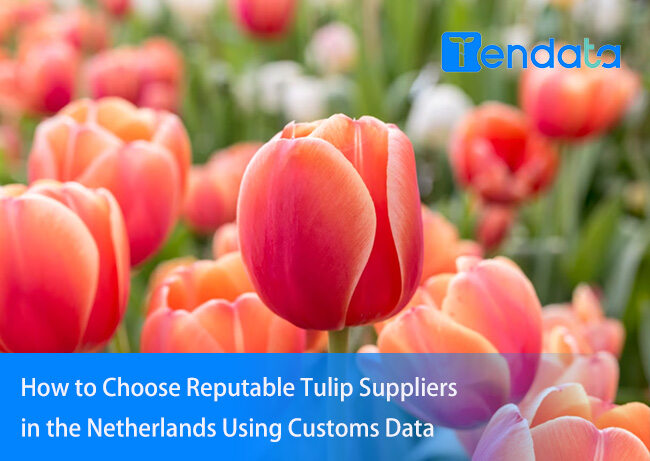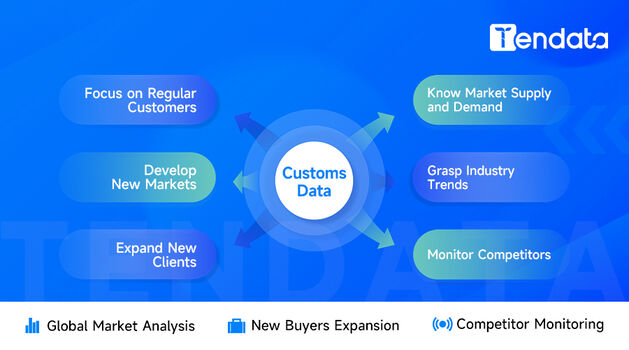 Import News
Import News
 2024-02-18
2024-02-18
Although the Netherlands is a relatively small European country, it is renowned for its unique festivals, intriguing historical figures, and beautiful landscapes. Picture vibrant tulip fields, overlooking ancient wooden windmills, traditional costumes, and wooden shoes. Known as the "world's flower shop," the Netherlands exports a large quantity of flowers, with nearly 90% of the global tulip production taking place in the country.
The Netherlands is famous for its exquisite tulip production, and tulips have been the national flower since the 17th century, symbolizing the country.
Long ago, tulips were brought from Turkey and Asia. In Europe, the first tulips appeared in the court of the Austrian Emperor in 1554. The botanist Carolus Clusius, seeking refuge from religious persecution in his homeland, came to the Netherlands. Tulips quickly adapted to the coastal sandy soil, becoming immensely popular. Speculation began on bulbous flowers, and in 1636, the price of a bulb reached approximately 1,000 to 6,000 Dutch guilders. The cost of a bulb was comparable to the price of a mansion on the Amsterdam canal. In the following years, the flower market started to decline, making tulip bulb prices even more intriguing.
Tulips hold a special place in the Netherlands. Bulb flower plantations stretch along the entire Dutch coastline, from Den Helder to Katwijk. Every April and May, this area, covering nearly 17,500 hectares, is covered with a colorful carpet. Almost half of the flower surface is covered with tulips. In total, about 7.5 billion bulb flowers are planted in the Netherlands. The goal is to sell young bulb flowers that grow into mature bulbs. Tulips, constituting 49% of the total, are the most common bulb flowers.
For many, tulips are the epitome of spring flowers. Although the original tulips had limited colors (primarily red and yellow) and were smaller, through careful breeding and hybridization, tulip bulbs are now available in various colors: white, pink, red, lavender, green, orange, purple, and even rainbow and ice cream, with various shapes and styles such as double tulips, peony tulips, and exotic parrot tulips. Currently, there are over 8,000 different varieties of tulips in the Netherlands.

How to Choose Reputable Tulip Suppliers in the Netherlands Using Customs Data:
1. Search for Dutch Tulip Suppliers: Access customs databases and identify tulip suppliers in the Netherlands using specified search criteria. Look for companies with consistent and substantial tulip exports that match your requirements.
2. Review Shipment Frequency: Use customs data to check the shipment frequency of potential suppliers. Suppliers with regular tulip exports may demonstrate reliability and operational efficiency.
3. Consider Trade Partnerships: Examine the trade partnerships of Dutch tulip suppliers in customs databases. Suppliers with recognized partnerships may be more reliable.
4. Evaluate Market Reputation: Search for additional information on the market reputation of potential suppliers in customs data. Enterprise background checks can provide insights into reliability and customer satisfaction.
5. Compare Multiple Suppliers: Use customs data to compare multiple tulip suppliers in the Netherlands. Consider factors such as export volumes, destination countries, compliance, and market reputation.
By leveraging customs data for supplier selection, you can make informed decisions and identify reputable tulip suppliers in the Netherlands. Always complement customs data with additional research and direct communication with potential suppliers to ensure a comprehensive assessment.
"Customs data contains vast information, and extracting relevant customer contact details can be time-consuming, often yielding results that fall short of expectations. Is it really the case? Or is it because customs data is being utilized incorrectly, resulting in wasted effort and time?
Developing customers using customs data involves precisely characterizing all buyers and their procurement systems in the target market. This allows for the quick identification of the most compatible customers, discerning their credit systems and procurement details. It aids in defining high-quality customers and profit margins, enhancing development efficiency, and improving overall effectiveness. When using customs data to develop new customers, consider the following three approaches. (>>>Click to Get Free Access to Customs Data for 90+ Countries)

I. Establish Customer Resource Database by Country
The establishment of a customer resource database is akin to a personalized work record. Start by using trade tracking functionality to compile a list of all customers in a country. Then, analyze each buyer's purchase volume, procurement cycle, product specifications, and supplier system. Pay special attention to the diversification or singularity of a buyer's supply channels, as buyers with diverse supply sources are preferable. Finally, filter out 30% of the potentially high-quality customers from that country and record them in your customer resource database. The database can be flexibly organized by country, time, customer name, follow-up steps, contact phone, email, contact person, etc. (>>>Click to Develop New Customers)
II. Establish Customer Resource Database by Peer Companies
Have a good understanding of the English names (including full names, abbreviations, etc.) of peer companies. Utilize the global supplier networking feature to compile a list of all customers associated with these peer companies. The critical step is to analyze customers from these peer companies based on purchase volume, procurement cycle, product models, etc. Finally, filter out key customers from your identified peers and record them in your customer resource database. (>>>Click to Apply for Free Trial)
III. Identify Newly Appeared Customers in Each Country
Use the trade search function to identify customers newly appeared in a country. Choose the country, set the date range, limit the product name or customs code, and check the "Newest" option. The search results will display high-quality customers that have newly emerged in that country within the specified time frame. Since these customers are new, they may have just started transactions, and the stability of their suppliers may be uncertain. It's essential to focus on following up with these new potential buyers and record them in your customer resource database. (>>>Click to Apply for Free Trial)
These three approaches for developing customers using customs data can be implemented based on the actual needs of the company and oneself. Consider the market environment, industry characteristics, strategic requirements, etc., to find a suitable method. The ultimate goal is to establish and organize a categorized archive of high-quality customers. Once you identify suitable customers, the next step is to precisely contact them through various channels, such as phone calls, emails, and online communication.
Category
Leave Message for Demo Request or Questions


 T-info
T-info T-discovery
T-discovery

 My
Tendata
My
Tendata Market Analysis
Market Analysis Customer
Development
Customer
Development Competitor
Monitoring
Competitor
Monitoring Customer Relationship
Customer Relationship





































































































































